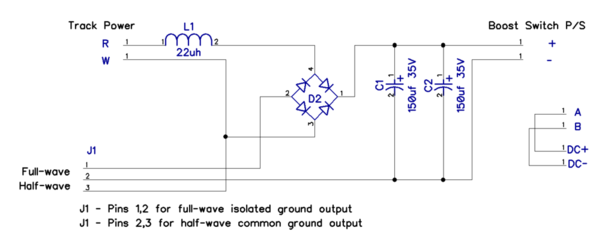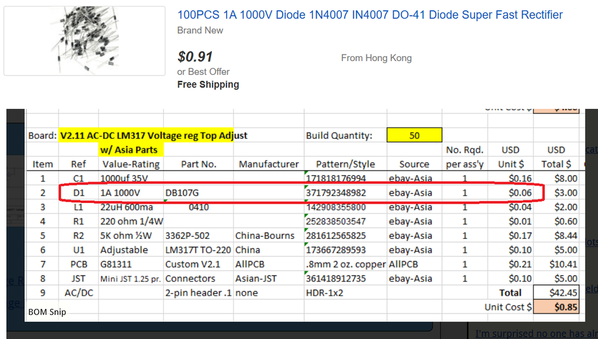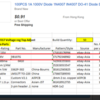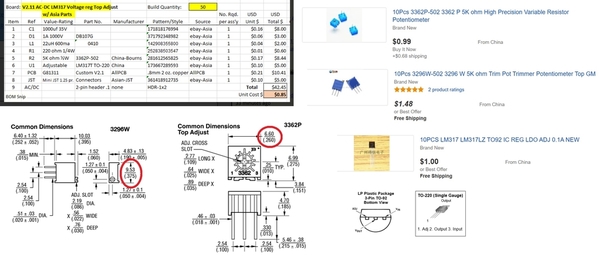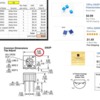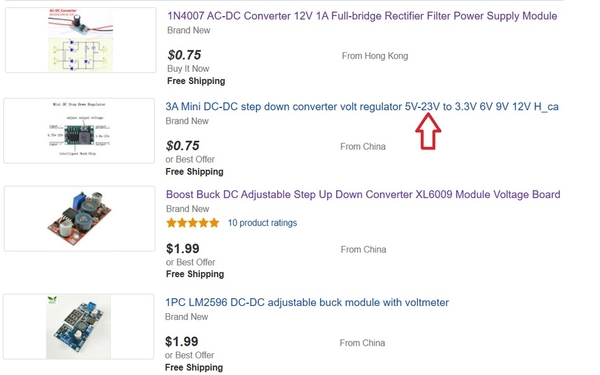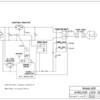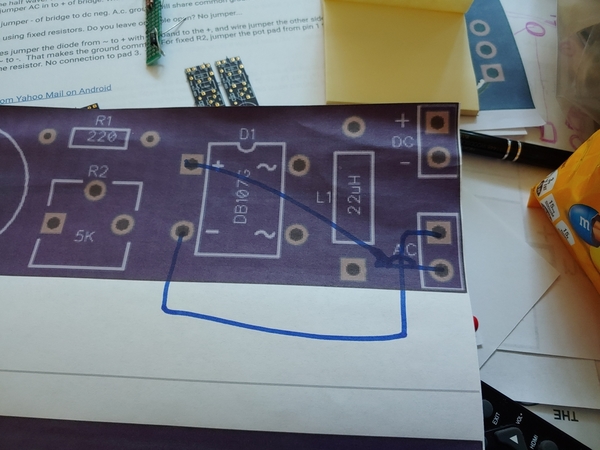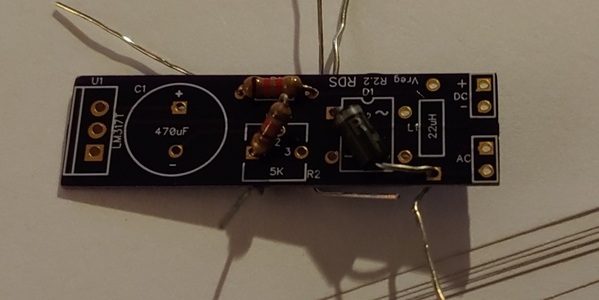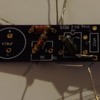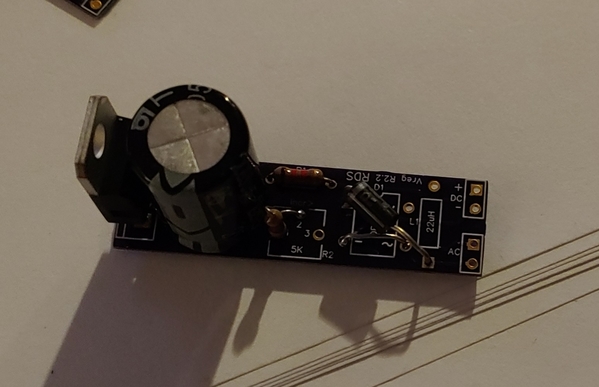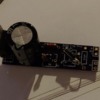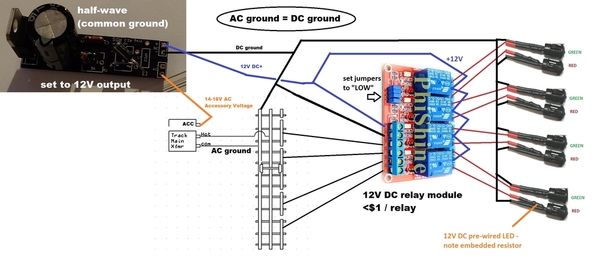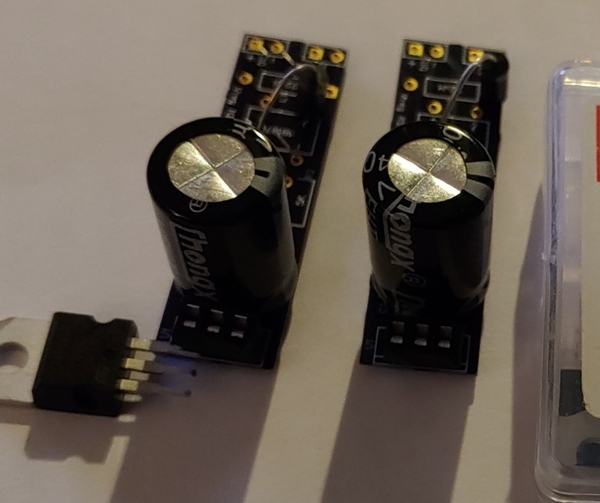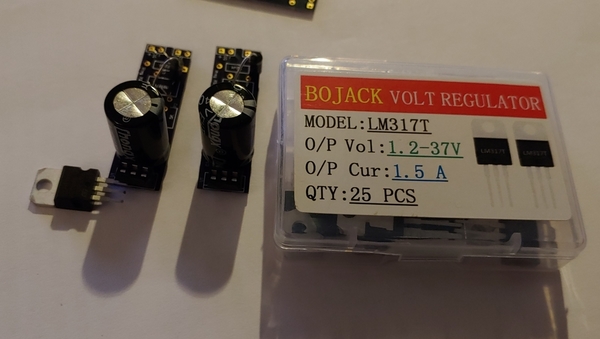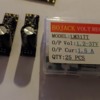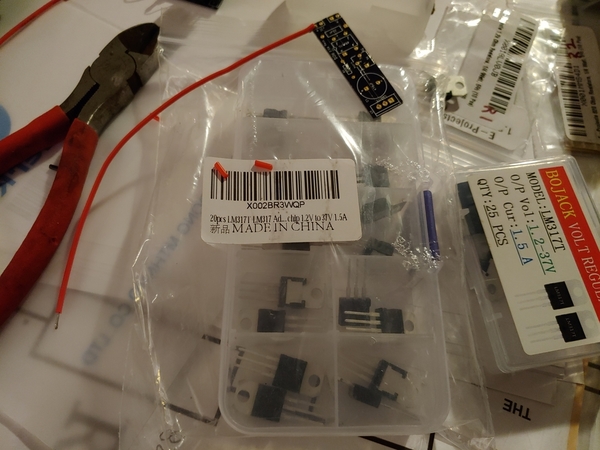I realize the train has left the station, but two other comments for the record.
1) Will a 3296W trimpot physically fit in the space allotted for the 3362P - without bumping into the cap or bridge? It's a little longer/wider and it would require a new pad to be dropped on the board since the terminals are in-line albeit on a 2.54mm grid. The idea is to allow either style of trimpot to be inserted. The 3296W is multi-turn as used in the ubiquitous LM2596 stepdown regulator modules that we have come to know and love. Same cost on eBay when I just looked. This might be a nice project for someone getting started with DipTrace and could take Rod's existing design and make a minor modification with a high likelihood of success while contributing to the cause (in my opinion of course).
2) For some applications with low-current, it might make sense to install the TO-92 version of the LM317. Might be even cheaper depending on where you buy. The idea here is very few designs come anywhere near requiring the >1 Amp capability of the LM317T. In fact I seem to recall real-user data where the current required in a passenger car LED application was 5 mA (or less)! In such a case there's no need for the TO-220 version which of course is a rather large package. Commensurately, you would not need a 1000uF capacitor to achieve a suitable flicker reduction...and could use, say, 220uF or less which would allow even a smaller overall space requirement. Again, the idea here is to create what amounts to an Application Note for Rod's board design. I suppose if someone learning DipTrace wanted a simple modification project to get one's feet wet, they could add 3 pads on a closer grid to install either the TO-92 package or the TO-220 package (same PCB board)...and contribute to the cause (in my opinion of course).
Good suggestions Stan; my take for what it's worth:
1) I haven't tried to implant the 3296W trimpot, but may give it a whirl. IMO the readily available 3362P pots are nice and compact, and offer only a 270 deg turn from max to min, and will allow 0.1 volt output resolution in this circuit, so that's what I went with, for now! That's only me though.
2) This board was not really intended for low power apps like led lighting. Grj's constant current board already does a great job of that. This board was intended for GP vreg use up to about 500 ma, AC or DC input, engine, car, or trackside mount. Having said that I tried adding the TO-92 pattern, as well as grj's suggestion of a single diode pattern over the bridge diode pattern. Here is what I came up with:

This is certainly workable, though I had to scrunch the components a bit to kept the new length down to 48mm, just under 2". But it fits and it would work. Width is still 1/2". I used a DO-35 pattern for D2 and angled it as you see to take up less space.
But then I got thinking, is this really necessary? The TO-92-100 pattern has the same pad spacing as the TO-220, and the pinouts are the same. So why not just stick the TO-92 leads into the same holes and call it done? Sure, the TO-220 drill holes are bigger than needed for the small version, but no big deal. Then I tried doing this fit and a 1N4002 diode across the ~ and + pads of D1. Here is the mock up:
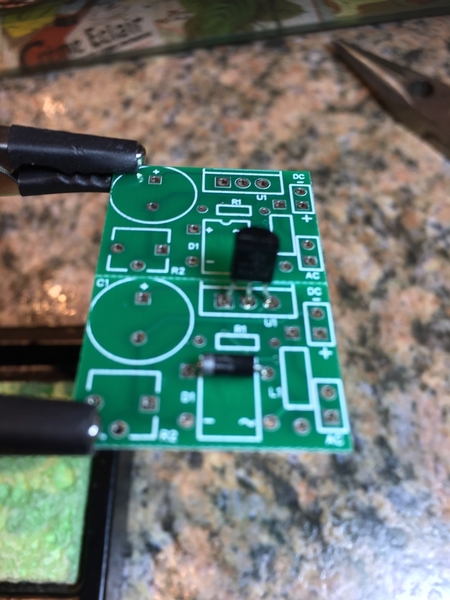
As you can see, it's a no-brainer fit. This of course is not the same board as posted above, but you get the idea. For a low power 317L version, you could just use a 1N4148 diode for D2, which would be even easier to fit.
I see 4 power options available in using just the bridge diode pattern as it stands:
1) Full wave AC to DC, with isolated grounds, using the bridge diode.
2) Half wave AC to DC, with common ground, using a diode as pictured, and a wire jumper from ~ to -.
3) Straight DC input using jumper wires for both sides of the bridge pattern, as per 2).
4) Straight DC input with the bridge in place, accepting that there will be a 1.4 volt loss in feed voltage to the 317.
This is pretty good versatility. All in all, I really don't see a burning need to put yet another set of Gerbers out there, but that's only my opinion of course!! If we think it should be done, by all means I will put them here for rtr12 to add to the sticky post of build projects. 
Rod




